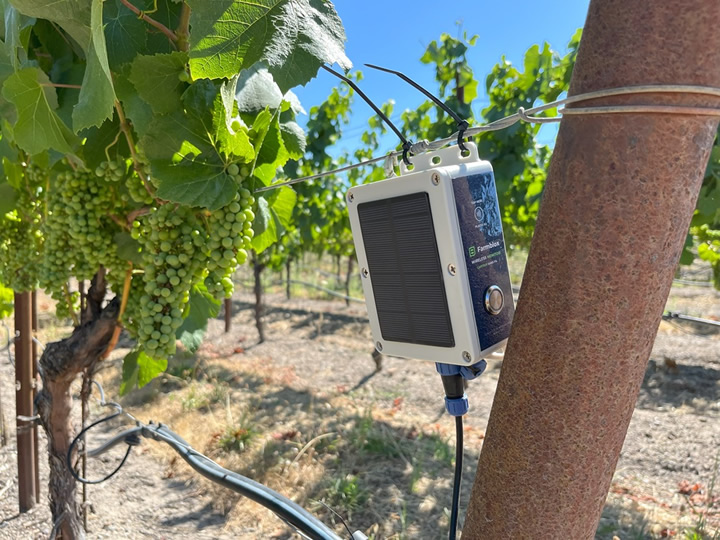The Agriculture Labor Shortage: Challenges and Solutions Through Automation

Over the last decade, the agriculture sector has faced a mounting labor crisis. In 2024, the U.S. agricultural industry needed approximately 2.4 million more farm workers, and this labor gap is expected to grow in 2025. This shortage highlights a growing challenge for farmers, who must maintain productivity and profitability despite a shrinking workforce.
The labor shortage is deeply intertwined with the aging demographic of farmers. The average age of a U.S. farmer is nearing 60, and fewer young people are entering the field. This trend raises concerns about the future of agriculture, as the pool of skilled labor continues to dwindle.
The Role of Technology in Addressing Labor Shortages
Technology has emerged as a crucial tool in helping farmers navigate the labor shortage. Automation and real-time monitoring systems can streamline operations, allowing farmers to focus on the essential tasks that require human expertise. These advancements are transforming the way farms operate, providing solutions that reduce reliance on manual labor while increasing efficiency.
How Automating Operations Can Help Farmers
- Precision in Problem-Solving: Automation enables farmers to identify and address specific issues with pinpoint accuracy. For example, sensors can detect irrigation leaks or soil nutrient deficiencies in real time, allowing farmers to act quickly and avoid costly delays. One maple farmer shared his experience of transitioning to automation. Before adopting sensor technology, he would spend up to 18 hours a day walking the lines of his farm, searching for leaks in the system. Now, with sensors deployed across his property, he knows exactly where leaks occur and can focus his efforts on fixing problems quickly rather than locating them. This shift has not only saved him time but also allowed him to reallocate his energy to improving other aspects of his operation.
- Scalability Without Additional Labor: Automated systems allow farmers to expand their operations without requiring a proportional increase in workforce. Tasks like monitoring crop health, controlling pests, or managing irrigation can be scaled across acres with less human intervention.
- Labor Substitution for Routine Tasks: Repetitive activities such as water measurements can be performed by automated sensors. This not only reduces physical strain on farmers but also ensures consistent quality and efficiency in farm operations.
- Enhanced Decision-Making Through Data: Automation doesn’t just perform tasks—it collects valuable data. Farmers can analyze trends in weather, soil conditions, and equipment performance to make informed decisions that improve efficiency.
- Resilience in Workforce Fluctuations: Automated systems offer stability during times of labor shortages, ensuring critical tasks are completed regardless of workforce availability. This resilience is especially vital during peak planting or harvesting seasons, when some farmers are competing with a McDonalds down the road that offers $25 an hour to work at a counter with an air conditioner.
Real-World Applications
Automation is already delivering measurable benefits to farmers, including saving thousands of labor hours by automating routine tasks, eliminating thousands of hours of manual labor.
Glenn Goodrich, owner of Goodrich’s Maple Farm, recently expanded his sensor deployment sixfold: “With technology, it allows us to pinpoint very closely where to go. One person could go and take care of a problem that you might've sent your whole team to search [for]. It’s days and days of saved time”. This example underscores how automation not only reduces labor demands, but also ensures that existing resources are used more efficiently.
Preparing for the Future of Farming
The labor shortage presents a significant challenge, but it also offers an opportunity to rethink traditional farming practices. By embracing new technology like automation, farmers can mitigate the impact of labor shortages while improving operational efficiency and environmental stewardship. Automation turns challenges into opportunities by enabling farmers to do their jobs, ensuring that agriculture remains resilient in the face of an uncertain future.
It’s clear that the future of farming lies in automation. The integration of automation into agricultural practices is not just about addressing labor shortages—it’s about creating a sustainable framework for the next generation of farmers. By investing in technology today, we can ensure that agriculture remains a viable and thriving industry for years to come.
 Nathan Rosenberg, CEO and Co-Founder of Farmblox, a farm automation system, connecting equipment and sensors to the internet so farmers can see everything and take action fast. In 2024, Farmblox saved 10,000 labor hours, eliminated 30,000 miles of manual labor and increased yields by $400,000 for maple producers. Reliably monitoring remote farmland in all weather conditions, Farmblox’s simple app on a smartphone, tablet, or computer helps farmers quickly identify operational issues like leaks, weather risks, or equipment failure – saving up to 50% in labor costs. Farmblox helps farmers combine any type of sensor they need based on their personal knowledge of the farm, from soil moisture to weather. Farmers can manage equipment and monitor the entire operation from anywhere.
Nathan Rosenberg, CEO and Co-Founder of Farmblox, a farm automation system, connecting equipment and sensors to the internet so farmers can see everything and take action fast. In 2024, Farmblox saved 10,000 labor hours, eliminated 30,000 miles of manual labor and increased yields by $400,000 for maple producers. Reliably monitoring remote farmland in all weather conditions, Farmblox’s simple app on a smartphone, tablet, or computer helps farmers quickly identify operational issues like leaks, weather risks, or equipment failure – saving up to 50% in labor costs. Farmblox helps farmers combine any type of sensor they need based on their personal knowledge of the farm, from soil moisture to weather. Farmers can manage equipment and monitor the entire operation from anywhere.
Comments (0)
This post does not have any comments. Be the first to leave a comment below.
Featured Product

